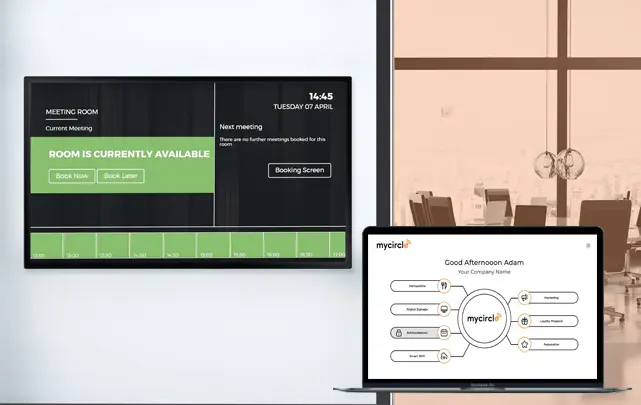Digital signage proves a game-changer for 86% of restaurant owners, driving increased sales. Engaging visuals, real-time updates, targeted marketing, and adaptability to trends create an immersive dining experience. Cost-efficient and dynamic, it enhances brand identity and customer satisfaction, making it a valuable investment in the competitive restaurant industry.
DIGITAL SIGNAGE TV DASHBOARD
Maximize Performance & Improve Office Organization
Enhance collaboration and achieve key performance indicators (KPIs) by dynamically visualizing mission-critical data and analytics in real-time. Elevate performance and boost engagement.










86%

35%
Shortened checkout wait times bring joy to customers by reducing perceived delays. This enhancement in efficiency contributes to a positive overall experience, fostering satisfaction and loyalty. Streamlining the checkout process reflects a customer-centric approach, reinforcing the business’s commitment to providing swift and seamless service.

30%
Digital signage ads drive a surge in average purchases, leveraging captivating visuals and targeted marketing. The dynamic displays entice customers, encouraging them to explore additional offerings and upgrades. This effective advertising strategy on digital screens enhances revenue streams, making it a profitable investment for businesses.

EASY MENU BOARD SOFTWARE
Create dazzling digital menu boards in minutes
Customize our free menu board templates with your own branding, images or videos. Update pricing and menu items online in seconds, no matter where you are. Changes display instantly on screens across locations. Save time and money. Use QR menu boards for a modern and engaging experience.
BOOST SALES AND BRAND AWARENESS
Showcase your promos to increase sales
Eye-catching videos and images of promos and specials spur last-minute additions to orders. Also, use storefront signage TVs to attract new and repeat customers. Easy digital menu software makes it a breeze to create and schedule playlists of promos.

Free digital signage templates
for Restaurants, Cafés, Bars (and more)
Make your place THE place to be. Attract more customers with our free, fully customizable, and professionally designed screen layout templates for digital menu boards, events and more.
NENTO APPS
Free apps help you tell your story
Easy to add, dynamic and flexible. Show useful, attention-grabbing content from a huge range of popular services that people love and appreciate. A few clicks & it’s on screen.

Why Choose Nento?

Unrivaled Reputation
According to Google, we boast the highest-rated reviews in the digital signage industry. Our satisfied clients attest to the excellence we provide. Experience the Nento difference today.
Client-Centric Approach
At Nento, client satisfaction is paramount. We tailor our digital signage solutions to meet your unique requirements, ensuring a seamless and personalized experience that contributes to your success.
Aesthetic Excellence
At Nento, we prioritize the visual appeal of your space. Our state-of-the-art digital signage displays ensure your venue stands out and exudes magnificence, leaving a lasting impression on your audience.
Continuous Innovation
At our core, innovation drives us. Committed to advancing in technology and design, we continuously explore new avenues to enhance our offerings. Our goal is to simplify your experience and provide access to the latest advancements in digital signage.
Comprehensive Solutions
At Nento, we provide comprehensive solutions, from installation and maintenance to content creation and updates. Our end-to-end services ensure a hassle-free experience, allowing you to concentrate on your business priorities.
Reliability and Support
Trust Nento for reliable digital signage solutions. Our dedicated support team ensures seamless system operation. Choose Nento for unparalleled excellence in digital signage. Contact us today for a visually stunning and technologically advanced future.

EASY MENU BOARD SOFTWARE
Create dazzling digital menu boards in minutes
Customize our free menu board templates with your own branding, images or videos. Update pricing and menu items online in seconds, no matter where you are. Changes display instantly on screens across locations. Save time and money. Use QR menu boards for a modern and engaging experience.
Extra benefits that boost your profits
Upsell
Eye-catching media tempt customers while they wait in line. Let your screens do the selling while your staff focuses on keeping customers happy.
Attract
Use storefront menu boards to attract new customers. Entice them in, already eager to order your delicious food. Then use in-store TVs to upsell menu items.
Entertain
Engage people as they wait for their orders by showing future offers, product information, news and weather. Also, inform them of events & party services.
Advertise
Showcase loyalty programs to attract repeat business. Also, display customer reviews on an impressive social media wall.
Schedule
Schedule menu boards so you display breakfast, lunch and dinner items at the right time and to the right people.
Save money
Save money and help the environment. Update your digital menu board instead of spending on design and printing services.
Get Started with Nento
Unlock the power of digital signage with our easy, professional and affordable solution.


























